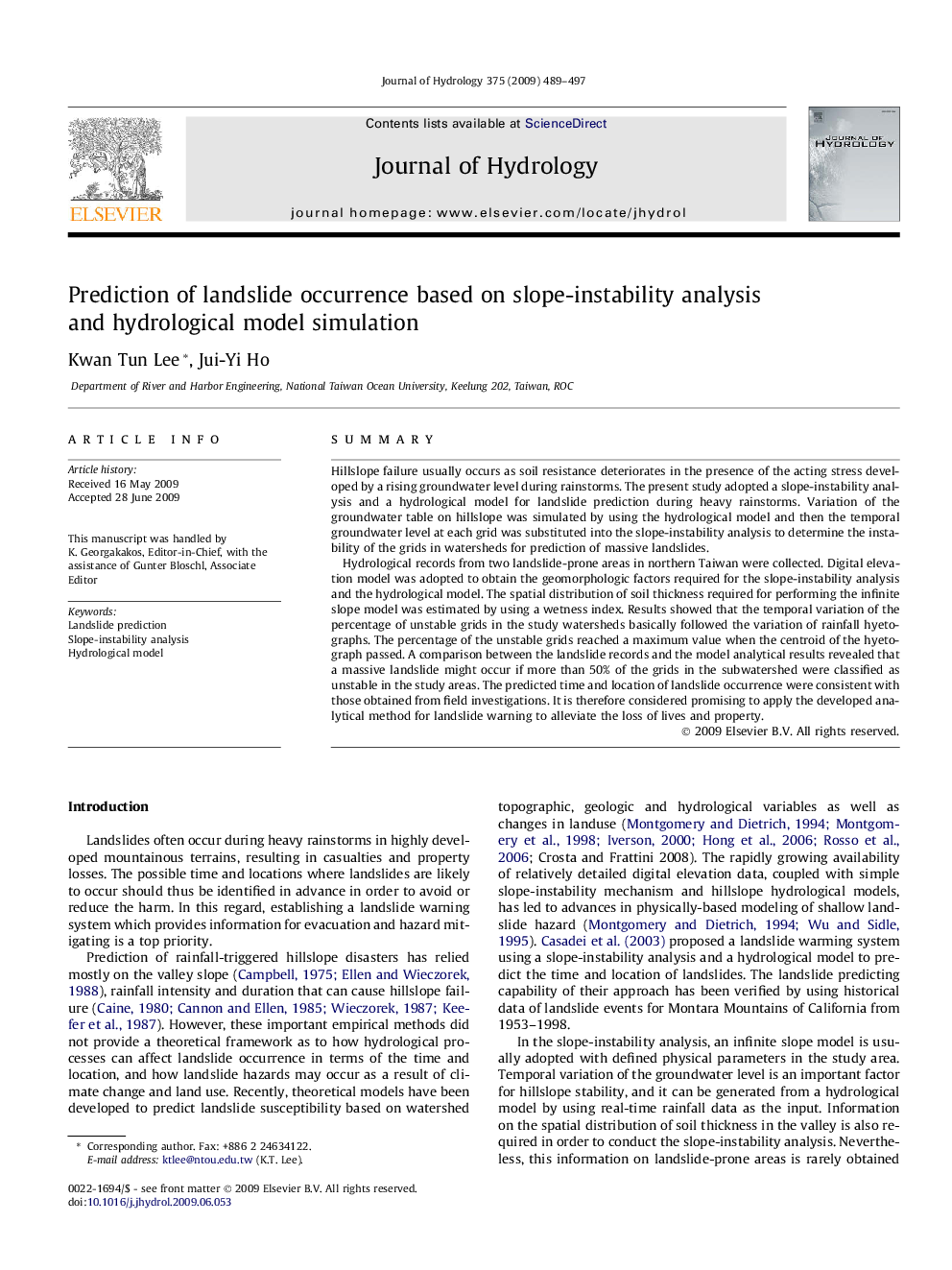| Article ID | Journal | Published Year | Pages | File Type |
|---|---|---|---|---|
| 4578645 | Journal of Hydrology | 2009 | 9 Pages |
SummaryHillslope failure usually occurs as soil resistance deteriorates in the presence of the acting stress developed by a rising groundwater level during rainstorms. The present study adopted a slope-instability analysis and a hydrological model for landslide prediction during heavy rainstorms. Variation of the groundwater table on hillslope was simulated by using the hydrological model and then the temporal groundwater level at each grid was substituted into the slope-instability analysis to determine the instability of the grids in watersheds for prediction of massive landslides.Hydrological records from two landslide-prone areas in northern Taiwan were collected. Digital elevation model was adopted to obtain the geomorphologic factors required for the slope-instability analysis and the hydrological model. The spatial distribution of soil thickness required for performing the infinite slope model was estimated by using a wetness index. Results showed that the temporal variation of the percentage of unstable grids in the study watersheds basically followed the variation of rainfall hyetographs. The percentage of the unstable grids reached a maximum value when the centroid of the hyetograph passed. A comparison between the landslide records and the model analytical results revealed that a massive landslide might occur if more than 50% of the grids in the subwatershed were classified as unstable in the study areas. The predicted time and location of landslide occurrence were consistent with those obtained from field investigations. It is therefore considered promising to apply the developed analytical method for landslide warning to alleviate the loss of lives and property.
